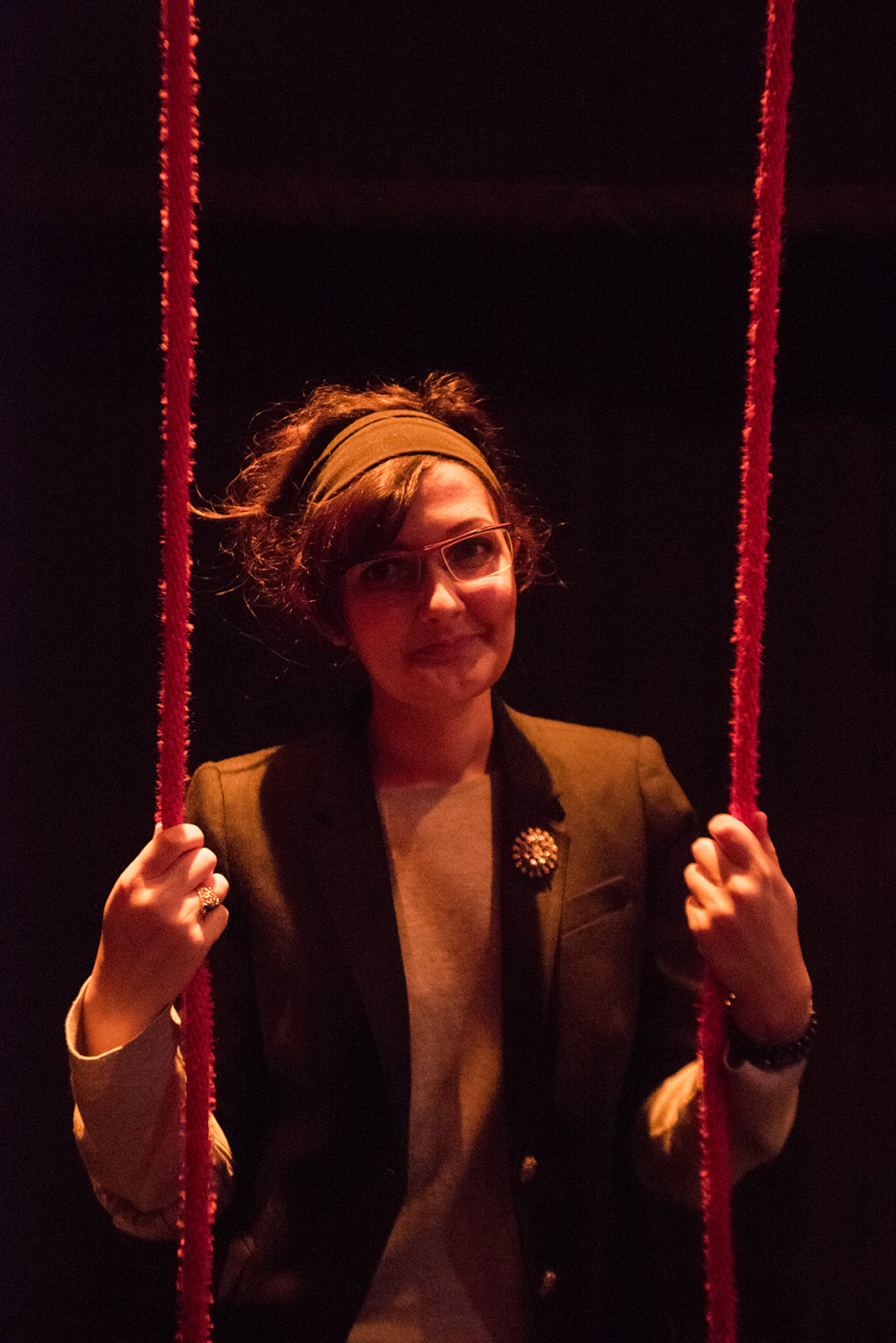Backstage Bruins: Set designer balances two visions for “The Trojan Women”

Graduate student Tatiana Kuilanoff designed the set of “The Trojan Women” by collaborating with the play’s two directors. (Anisha Joshi/Daily Bruin)
By Sasha Cheechov
March 9, 2016 11:44 p.m.
It would be impossible to distinguish set designer Tatiana Kuilanoff from the rest of the stage crew if not for her sharp coat and clean pants. She is in charge of the black-shirted crew members bustling across the stage and has designed 14 sets in the past, but she runs about touching up the painted floor and positioning props like any other crew member.
The production of “The Trojan Women,” put on by graduate students at the UCLA Department of Arts and originally by the Greek playwright Euripides, tells the story of the fates of the women of Troy after the city is famously ravaged. It is split into two acts, directed by two students, and performed by entirely separate casts. Kuilanoff, a graduate student in set design, is responsible for creating the set, the one piece that brings them all together.
Kuilanoff said she worked for months to brainstorm, design and bring together the stage. The atypical 360-degree placement of seating and sets has both literal and figurative significance: It is meant to capture the in-your-face nature of the play and bring audience members up close and personal with actors.
The purpose of dividing the play was to incorporate the two directors’ creative perspectives, said Michelle Gong, a graduate student in theater directing and director of the first act. However, the division caused creative difficulties for Kuilanoff.
Gong’s ideas for the set and production centered around a ritualistic temple feeling, while the visions of Angela Lopez, a graduate student in theater directing and director of the second act, focused more on movement and fragility as the women meet tragedy in the play’s climax and conclusion, Kuilanoff said.
To bring to life the reality and tragedy of war, Kuilanoff and the two directors worked to create a set in which the audience is forced to face uncomfortable, intense and emotional moments.
The audience of less than 50 is seated in a single ring of chairs that borders a circular stage. The stage is not raised, and no one sits in front or behind each other. Actors come face-to-face with the audience during the performance, and the set makes the viewers feel trapped and on edge, Kuilanoff said.
The circularity of the theater ensures that all attention is pointed toward center stage and allows the audience to witness the reactions of their peers to the play’s tragedies.
“In our society, there’s a sense of detachment (from war). People look away; they don’t want to recognize war is happening. This piece forces us to watch the chaos and atrocities that are happening still to this day,” Kuilanoff said.
The space Kuilanoff began working with was a small, confined theater that is a classroom by day. She felt pressure to formulate a set that had the atmosphere both directors desired, but was also temporary enough to be quickly taken apart.
Two months before the production, Kuilanoff came across an image of an art installation piece online that she couldn’t ignore. The cliff-like structure with red threads extending from it and how it would contrast toughness and fragility, became the main visual inspiration for the set
“It was very poetic, and for me it instantly felt like ‘Trojan Women.’ Because ‘Trojan Women’ has this roughness, this rawness, this ritualistic aspect, but there’s also this fragile nature to it,” Kuilanoff said.
The piece led Kuilanoff to create a circular cage of red, distressed ropes hanging from the ceiling around the stage and seating.
Gong said for the first act, the cage is a symbolic barrier between the audience and the outside, between heaven and earth. In Lopez’s second act however, it stands for a distortion of time, signifying that for the women, time is running out.
Kuilanoff also incorporated a red-splatter painting technique by vigorously flicking the paint along the stage’s edge. The angry color of blood alludes to the ferocity of war and the pain the Trojan women feel, she said.
The three months of unseen work that went into Kuilanoff’s intricate set allows the production to make a bold statement against the way society sweeps war under the rug, Gong said.
“There are so many takes on this set, but conceptually it all fits with the idea of fate and entrapment, and witnessing the chaos and atrocities at hand,” Kuilanoff said. “Don’t avert your gaze – this is it.”


